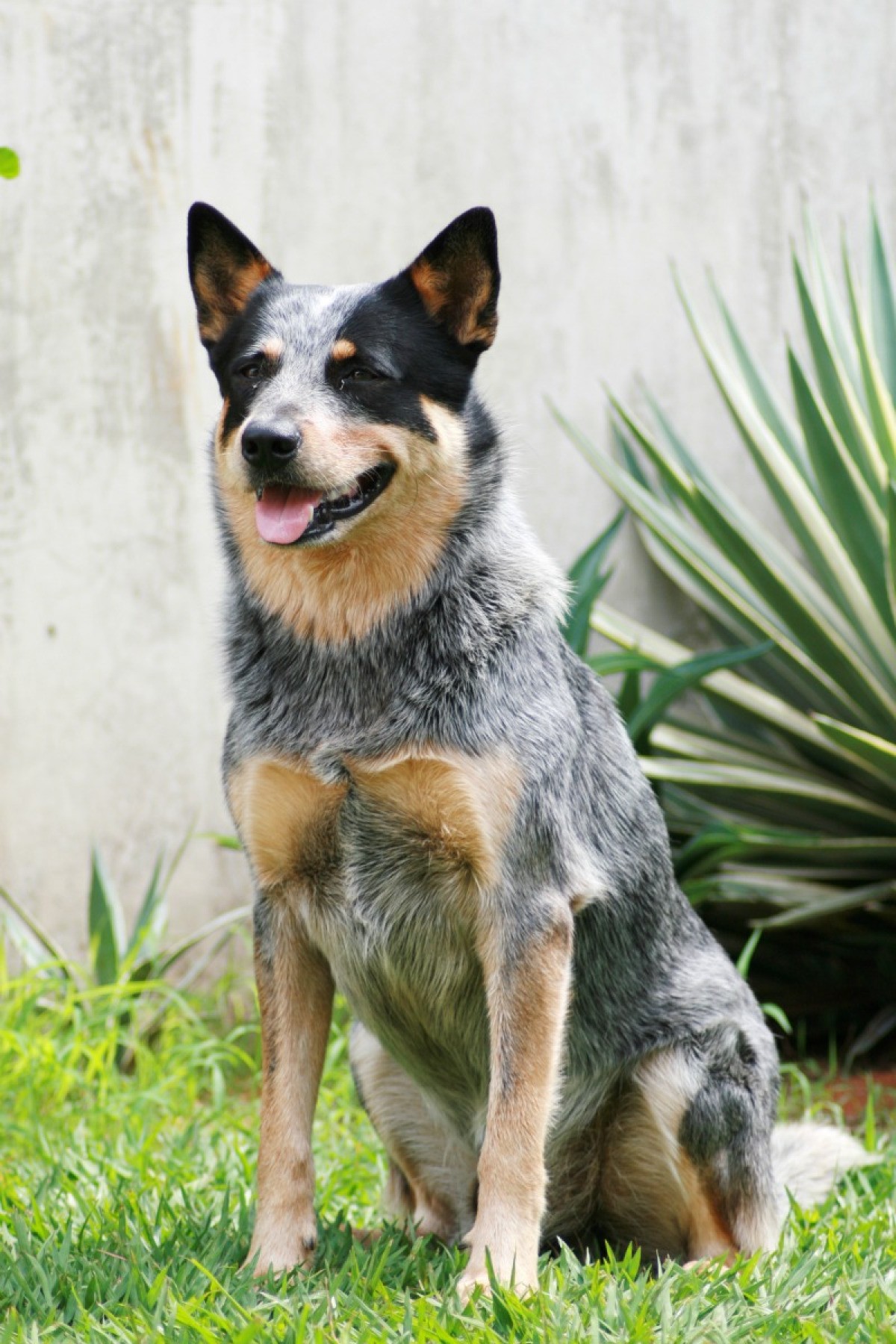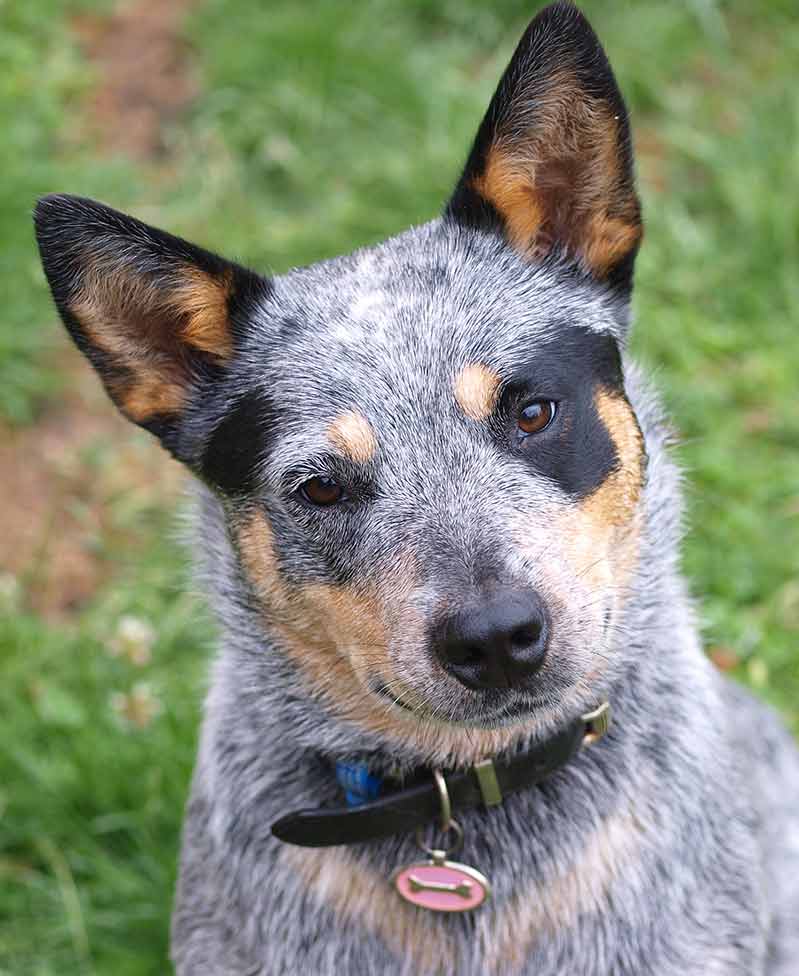Could a dog breed, born from the harsh landscapes of Australia, truly be the ultimate companion both fiercely loyal and incredibly intelligent? The Blue Heeler, also known as the Australian Cattle Dog, embodies this very paradox, a working breed with a heart of gold, ready to take on any challenge alongside its human family.
From the rugged outback to suburban backyards, the Blue Heeler, with its distinctive coat and unwavering work ethic, has captured the hearts of dog lovers worldwide. This remarkable breed, a testament to the ingenuity of Australian stockmen, is much more than just a pretty face. It's a powerhouse of energy, intelligence, and devotion, demanding a specific lifestyle to thrive. Understanding the Blue Heeler is understanding a legacy of resilience, purpose, and companionship.
| Attribute | Details |
|---|---|
| Origin | Australia, 19th Century |
| Purpose | Herding cattle, working dog |
| Also Known As | Australian Cattle Dog, Queensland Heeler |
| Temperament | Intelligent, loyal, energetic, protective, sometimes reserved with strangers |
| Physical Characteristics | Medium-sized, muscular build, prick ears, distinctive coat patterns (blue or red speckle) |
| Health Considerations | Prone to hip dysplasia, progressive retinal atrophy (PRA), deafness |
| Grooming Needs | Moderate; requires regular brushing to manage shedding |
| Exercise Needs | High; needs ample physical activity and mental stimulation |
| Training | Intelligent and trainable, but needs consistent, positive reinforcement training; thrives on mental challenges. |
| Lifespan | 12-16 years |
Reference: American Kennel Club - Australian Cattle Dog
- Golfkicks Net Worth Transforming Sneakers Into Golf Shoes
- Jamie Murray Career Earnings A Deep Dive Into The Tennis Stars Financial Success
The Blue Heeler's history is etched in the unforgiving terrain of Australia. The breed's creation was no accident; it was a deliberate process to forge a dog capable of enduring the brutal work of herding cattle across vast distances and under harsh environmental conditions. The foundation of the breed lies in a cross of the Australian Dingo, known for its resilience, and herding breeds such as the Smithfield Cattle Dog, with contributions from other breeds like the Collie. Robert Kaleski is credited as one of the earliest breeders, starting his work in 1893, although the breed's origins trace back to the 1840s.
The resulting dog, the Blue Heeler, quickly proved its worth. Its compact but muscular build, combined with an unwavering work ethic, allowed it to thrive in the outback. This is a dog bred to withstand searing heat and vast distances. The Australian Cattle Dog is a tough cookie, known to keep working despite serious injury. The breed's association with the tough work of herding cattle gave it a reputation for resilience and an unparalleled drive.
The Blue Heeler's physical attributes are as remarkable as its history. They typically have long, sturdy bodies, pointed ears, rounded heads, and strong legs and necks, all features that contribute to their agility and endurance. Their coat, a dense double layer, protects them from the elements. The distinctive "blue" coat, often speckled or mottled, is a defining characteristic, often complemented by markings of tan, black, or blue on the head, chest, and legs. The "red speckle" variant showcases a similar pattern with darker red markings. The coat is not just for show; it's a functional feature that protects them from the sun and underbrush.
- Andrew Taggart Net Worth A Deep Dive Into His Wealth And Success
- Unveiling The Wealth Of Gene Autry How Much Was Gene Autry Worth
The breed's appearance reflects its working heritage. The strong build and overall athleticism speak to the breed's capacity for hard work. It is, in essence, a medium-sized dog with a powerful presence and a look that reflects its no-nonsense approach to life. The Australian Cattle Dog is an active, sturdy breed of medium size with prick ears. Its short dense double coat is either red speckle, with darker red markings on the head, or blue, often with speckling or mottling and often with markings in blue, tan, or black on the head; in blue dogs, tan also appears on the lower legs, chest and throat, and face.
Beyond their physical prowess, Blue Heelers are celebrated for their exceptional intelligence. They're quick learners, capable of understanding and responding to complex commands. This intelligence, however, also means they need consistent mental stimulation to prevent boredom and destructive behaviors. Puzzle toys, training sessions, and interactive games are essential to keep them engaged and happy.
The Blue Heeler's temperament is complex. They're fiercely loyal and protective of their families. They often bond strongly with one person but can be affectionate towards all members of the household. They're known to be affectionate dogs and may lick their owners or other dogs as a sign of affection or to show submission. This affection, however, is balanced with a wariness of strangers, making early socialization crucial.
This breed's high energy levels demand a significant commitment from potential owners. They require a lot of exercise daily runs, vigorous games, and opportunities to explore. Without sufficient exercise, a Blue Heeler can become restless and destructive. Mental stimulation is equally critical; Heelers thrive when given tasks to complete, such as training exercises or games that challenge their problem-solving skills.
Training a Blue Heeler requires patience and consistency. They respond best to positive reinforcement techniques. Avoid harsh methods, as they can make the dog distrustful or resistant. Early socialization is essential to prevent them from becoming overly wary of strangers. Exposing them to various people, places, and situations from an early age will help them develop into well-adjusted adults.
Potential owners must be prepared for the breed's herding instincts. They may try to herd children, other pets, or even moving vehicles. Training can help manage these instincts, but it's crucial to understand that they are a fundamental part of their nature. The determined Heeler pup is ready and raring to go, whether it means herding cattle across the wilderness or chasing a tennis ball across the park.
Grooming a Blue Heeler is relatively straightforward. Their double coat sheds moderately, requiring regular brushing to remove loose hair and prevent mats. Regular nail trims, ear cleaning, and dental care are also essential for maintaining their overall health and hygiene. The heeler has no reservations about getting their paws dirty.
Like all breeds, Blue Heelers can be susceptible to certain health conditions. Hip dysplasia, progressive retinal atrophy (PRA), and deafness are potential concerns. Responsible breeders screen their dogs for these conditions, so it's crucial to choose a reputable breeder when acquiring a Blue Heeler. Annual veterinary checkups are essential for monitoring their health and detecting any potential issues early.
The Blue Heeler is not for everyone. Its high energy levels, strong work ethic, and protective nature require an active owner who can provide the necessary exercise, training, and socialization. However, for those who can meet these needs, the Blue Heeler offers an unparalleled bond of loyalty, intelligence, and companionship. They are a testament to resilience, a breed that embodies the spirit of the Australian outback. The Australian Cattle Dog, also known as the blue heeler, is a strong, intelligent, and energetic breed known for its working ability and loyalty.
The Blue Heeler, in all its forms, from the working dogs of Australia to the family companions of the world, embodies a unique blend of traits. They are a breed that demands respect and understanding, but rewards their owners with unwavering loyalty and boundless affection. If you're ready for a dog breed thats a little ruff and tumble, and prepared to put in the time and effort, the Blue Heeler could be the perfect addition to your family.
They also go by the name queensland heeler, a reference to queensland, australia, where breeders are believed to have refined the breed.


Detail Author:
- Name : Maximo Kihn
- Username : schuster.monty
- Email : huel.lura@swaniawski.com
- Birthdate : 1990-04-04
- Address : 6471 Rosalinda Cape Wilfordview, DE 38781-2896
- Phone : +1 (224) 608-8554
- Company : Cummerata Group
- Job : Home Entertainment Equipment Installer
- Bio : Nihil ut eaque voluptatem est dolorem. Voluptas eum rerum quia sunt quae quisquam. Ab id ratione voluptates voluptatum culpa quia nemo.
Socials
twitter:
- url : https://twitter.com/joanie_xx
- username : joanie_xx
- bio : Et eos qui asperiores. Voluptas aperiam ratione nisi et maiores. Voluptas omnis earum tempore natus.
- followers : 6345
- following : 2498
instagram:
- url : https://instagram.com/joanie_lockman
- username : joanie_lockman
- bio : Voluptatibus non omnis ad repellendus. Qui vel hic ut non sint vel.
- followers : 1693
- following : 724
linkedin:
- url : https://linkedin.com/in/lockman1981
- username : lockman1981
- bio : Temporibus vel nihil commodi aliquid tempore.
- followers : 4810
- following : 44
facebook:
- url : https://facebook.com/joanie9939
- username : joanie9939
- bio : Nulla quia laborum quisquam et velit et.
- followers : 4890
- following : 173